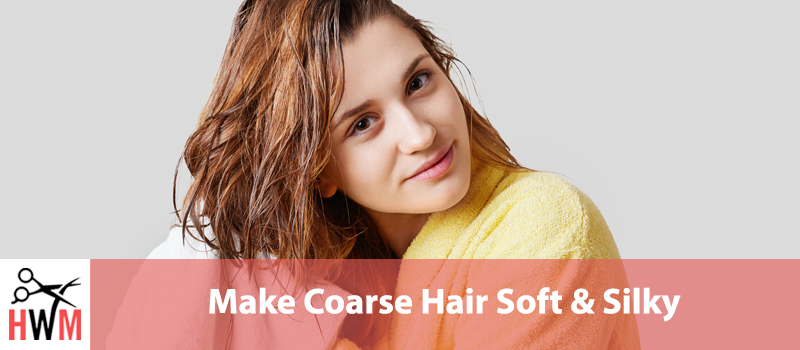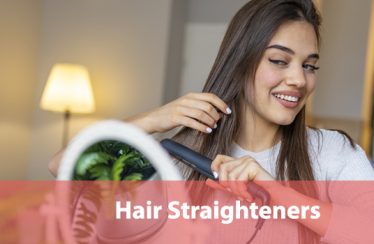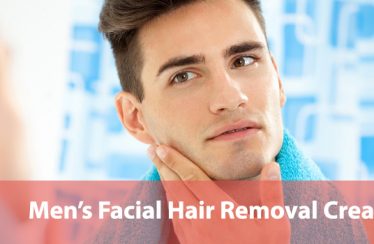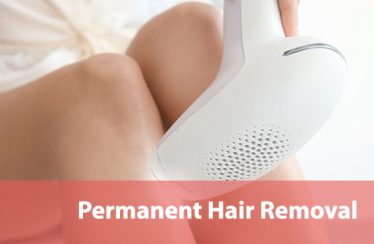If you have coarse hair, you’re already familiar with the challenges of managing your hair. Chances are you have enviable hair with lots of volume and presence, but that comes with tangles and frizz.
Worse, if you have dry hair, it quickly starts to feel prickly and itchy. Really dry coarse hair even begins to look and feel a bit like straw. More than other hair types, dry coarse hair also loses its luster and shine. Quickly your hair looks lifeless instead of vibrant and tangled instead of styled.
This article will help you address all these problems and transform your dry difficult coarse hair into a soft and silky wonder.
- Some Coarse Hair Basics
- Coarse Hair Dos and Don’ts
- First Things First: How to Properly Wash Coarse Hair
- Additional Maintenance Treatments for Coarse Hair
- Lifestyle
Some Coarse Hair Basics
Before we get into the details, let’s talk about some coarse hair basics.
Coarseness, Thickness, and Texture
There are some assumptions that coarse hair is always curly and always thick. That isn’t true. Coarse refers to the width of individual strands of hair. If a single strand of hair between your fingers feels thick, it’s probably coarse.
Another comparison is a single strand of your hair against a strand of all-purpose sewing thread.
If your hair is thicker than the sewing thread, it’s coarse.
Coarseness doesn’t necessarily have anything to do with the shape, straight or curly, texture, dry or soft, or thickness of your hair.
Thickness is the measure of how much hair you have, not the width of an individual strand. Thick hair has more active hair follicles, and often a greater concentration of hair follicles in general, on your scalp. It’s possible to have thick, fine, hair, or lots of hair made of very narrow strands. It’s also possible to have thin, coarse, hair, or less hair with wide strands.
Coarse hair does tend to take and hold styling well, which can lead to more people with coarse hair rocking wavy do’s and tight curls, but coarse hair isn’t necessarily curly. You can have coarse hair that is also very straight or coarse hair that forms natural ringlet curls, all the way through to afros and styles that are only possible for thick, coarse, curly, hair.
Each of these shapes can make a difference in how you work with and style your hair, just like fine hair needs different attention than coarse hair.
Is Coarse Hair Harder to Manage?
A lot of people think that coarse hair is naturally harder to manage. That isn’t strictly true. Think instead that coarse hair requires different hair management than fine hair. But fine hair is treated as more of default and products that aren’t specifically designed for coarse hair are usually designed for fine hair.
Since these two hair types require very different treatments, that can make it seem more difficult to manage coarse hair since you spend time looking for coarse hair products and styling guides.
Fortunately, times are changing and there is broader recognition of different hair types and styles. As that recognition becomes more widespread in the beauty industry the preference for fine hair types, products, and styles is diminishing.
Realistically, a good hair care routine for fine hair takes almost as much time as a routine for coarse hair. Coarse hair takes a little longer in each step for two reasons.
The first is that coarse hair needs more time to absorb moisture through the whole strand, and the second that coarse hair is often also thick and needs more time to work product through all of your hair.
However, the idea that coarse hair is harder to handle isn’t true. Coarse hair can be just as cooperative as finer hair types, provided you’re seeing to your hair’s specific needs.
Coarse Hair Dos and Don’ts
To get started, let’s look at some of the basic dos and don’ts for coarse hair.
Do
Don’t
These are general rules that, if you can stick to them, will greatly improve the texture and appearance of your hair over time. That said, no single change or product will immediately make all the difference in your hair. Commercials with hair models aside (it’s all camera tricks and editing folks), great, soft and silky coarse hair is all about your hair care routine, your diet, and time.
Let’s talk details, what kinds of products you should use, how to use hair masks, and why our Do list works.
We’ll talk about some of the Don’ts along the way as well. We’re focusing on Do’s here because a good hair care routine will let you get away with some of the Don’ts and focusing on the positive things tends to be more effective than eliminating negative habits anyway.
First Things First: How to Properly Wash Coarse Hair
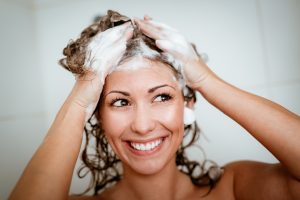
You can work with the best products in the world, throw out your blow dryer and other heat styling tools, and rock your natural hair 24/7, but you still won’t get soft and silky hair if you don’t know how to wash it properly.
So, let’s start here.
There are three effective ways to wash coarse hair, regular shampoo and conditioner, reverse washing, and co-washing. We’ll talk about all three because each method has different advantages and disadvantages for your hair. Likely, once you’ve had some time to experiment and become more familiar with your hair, you’ll use some combination of all three.
Regular Washing
To use a regular wash routine for coarse hair you need a couple of things. First, you need a good shampoo and conditioner. These should be two separate products, not a 2 in 1.
2 in 1 shampoo and conditioners may work for people with naturally low-maintenance hair who don’t need to style or shape their hair regularly, but they don’t give you much control. Since shampoo is supposed to wash out, and conditioner is supposed to leave a protective layer over your hair, you tend to get more shampoo buildup, and less conditioning, out of 2 in 1 products.
You should also look for shampoos and conditioners that are specifically designed for coarse hair. They should also include moisturizing products, and likely will advertise themselves specifically as a moisturizing shampoo or conditioner.
Since the shaft of coarse hair is thicker, it takes more moisture to soak into your hair shaft. Moisture is the name of the game when it comes to creating soft and silky tresses and should be your number one focus.
For coarse hair, it’s important to use the shampoo mostly on your scalp. Wash your scalp twice, the first wash should be only your scalp. The second time you can wash the lather through your hair strands, but you don’t have to.
Shampoo strips a lot of oil and moisture out of your hair and washing too much of your hair with it can be counter-productive.
After you’ve rinsed the shampoo out of your hair, coat your hair strands with conditioner. Focus first on the tips of your hair and work your way up the shaft until about an inch away from your roots. The hair right by your scalp has better access to your natural conditioner, sebum oil, and conditioner can get into and clog your pores, so you should avoid applying it right on top of your scalp.
Leave the conditioner in for 3-5 minutes, and then rinse. If you’re looking for extra-shine or are need to quickly start the healing process in your hair, rinse with cold or room-temperature water instead of hot.
Reverse Washing
Instead of washing with shampoo twice, and then using conditioner to re-apply moisture to your hair, you can reverse the process, and wash with conditioner and use shampoo as your last step.
This method can also save on shampoo since you only need one wash with your shampoo instead of two.
Simply condition your hair using the method we outlined before. The only difference is this time, instead of completely rinsing your hair, you should only re-wet it slightly before you shampoo. Use enough water to soak your hair, but it should still feel slick and slightly heavy with conditioner.
Shampoo your hair regularly, avoiding using much shampoo on the hair shaft or roots. Only one wash, not two.
Doing this prevents shampoo from stripping as much moisture out of your hair, giving it better access to the natural moisturizing agents in sebum, the oil your skin produces all the time.
Reverse washing is great for coarse hair since it prevents a lot of the damage that can buildup over time and make coarse hair dry and dull. But, it’s not an every-time washing method for most people. Unless you have particularly dry hair, reverse washing every time will build up too much oil on your scalp and hair.
Better to use this method every other time you wash your hair, and experiment with how it looks and what hairstyles work best when you use this method.
That said, it will have an immediate impact on the feeling and appearance of your hair. Reverse washing will make your hair significantly smoother as soon as it’s dry. Over time, this method will give you silky soft hair, but maintaining it will take other additions to your routine as well.
Co-Washing
Another method specifically for people with very dry hair, or hair that needs immediate rescue, is co-washing.
Some people, especially if you are of African descent, can use this method full time. But, you should approach switching to co-washing full time with caution, since you can easily go from dry hair to greasy hair if you do it too much.
Co-washing is short for Conditioner-Washing. To co-wash you don’t use shampoo at all. Conditioner will still lift dirt and clean your hair but isn’t as harsh and deposits moisture instead of eliminating it.
Co-washing can work well if you do a lot of heat styling or chemical styling since you likely have more damage and a greater need for protective moisture.
You can co-wash with a single rinse of conditioner, or two. If you use two, wash quickly with one, and leave it in for several minutes the second rinse.
Like reverse washing, you’ll likely see the best results alternating this method with regular washing or using this as an occasional hair-booster instead of a regular part of your routine.
Additional Maintenance Treatments for Coarse Hair
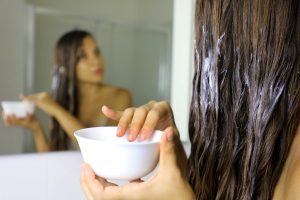
All your other hair treatments can fall under the maintenance category. These aren’t washing methods, but rather additional things you can do to help your hair achieve that soft and silky texture we all want.
Hair Masks
This is one of the first, and easiest, bit steps you can take to get soft silky hair. Hair masks are a once a week additional step that gives your hair a deep-moisture boost, along with other essential nutrients, depending on what kind of mask you use.
Masks vary widely, but as a basic outline, you apply a hair mask like you would apply conditioner. Some can be applied directly to your scalp, others should stop an inch away just like a conditioner. Instead of applying a mask in the shower, you’ll put it on before, and wear it for at least 10 minutes. Some hair masks can be worn overnight.
The cheapest and easiest masks are oil treatments. If you cook with olive oil, you already have everything you need. A couple of tablespoons of oil, depending on how much hair you have, should be plenty. You can apply it room temperature or use a microwave to add some heat.
Hot oil treatments add more moisture since they can penetrate and soak into your hair cuticle more easily.
If DIY treatments aren’t your thing, there are lots of commercially produced hair masks available. When you buy a commercial hair mask you should look for the same basic qualifications as your shampoo. It should be coarse hair specific, focus on moisture. Ideally, it should also be paraben and sulfate-free and have multiple varieties of natural oils.
DIY Mask Ideas
Of course, there are lots of ways to make homemade masks.
Coconut milk, eggs, olive oil, coconut oil, bananas, honey, and avocados are all good hair mask ingredients that you can easily find in your local grocery store if you don’t already have them at home.
Vinegar and green tea are often also suggested as hair mask options, but we find that both work better as hair rinses than masks. That said, both boost shine and volume and can encourage hair growth.
The liquid options for masks are easy, simply use enough liquid to coat your hair, at whatever temperature is most comfortable for you to use. A shower cap can help keep the mask contained and on your hair, while a towel can help keep hot oil treatments warm.
Avocados and bananas will both work best if they are perfectly ripe, or slightly overripe. You should mash them up to a paste.
Optionally you can add oil, milk, vinegar, or honey to either fruit paste to thin it out and add other benefits to your mask. You just need it thin enough to easily massage through your hair and fully coat each strand.
Eggs are a bit trickier since they act a bit like glue if they dry in your hair. Instead of using eggs by themselves, we recommend mixing egg yolks and oil together or adding an egg to a predominantly liquid mask.
All of these will work best left in your hair for at least an hour, but only the oils are suitable to wear overnight.
Hair Rinses
Hair rinses are another simple addition to your hair care routine that can make your hair significantly healthier, softer, and easier to manage.
A rinse, as opposed to a mask, runs through your hair instead of sitting on it. Many people shower after using a hair rinse, but you don’t have to. A good hair rinse won’t damage your hair if you leave it on.
One way to make a hair rinse is to mix a couple of drops of essential oil in a cup of water and pour it over your head. You can also use a spray bottle to apply a smaller amount of the rinse.
Good Essential Oils for Coarse Hair Rinses
You can also mix oils to get a scent you like since the scent will stay in your hair at least as long as it’s wet and may persist after your hair is dry.
Apple cider, mixed half and half with water, is another great rinse. It boosts shine, adds a little volume, and will help the sebum near your scalp spread through all of your hair.
Green tea, brewed normally and allowed to cool enough to be comfortable, can also help add shine and mildly cleanse your hair. In addition to working as a cleansing booster, green tea can encourage more hair to grow in, making it thicker.
Like washing, and hair masks, we recommend using a combination of different rinses, 1-2 times a week, or anytime your hair needs a quick boost but you don’t want to shower.
Lifestyle

We don’t have time to go over all the dos and don’ts of our list, so we’ve tried to highlight the most important hair routine changes you can make, but some lifestyle changes also make a big difference for your hair.
How you wash your hair, and additional rinses and masks, all affect your hair from the outside in.
But you can make big differences in your hair from the inside out, too.
Diet
The biggest single lifestyle change you can make is in your diet. Having a healthy diet by itself is a great start, but there are some things you can focus on to get a great hair boost.
Omega 3s are one of the more important nutrients for your hair. You can get lots of omega 3s by adding more fish to your diet. Another option, especially if you’re vegetarian or vegan, are nuts and seeds. Pumpkin and flax seeds are a good option, but most other nuts will also give you great omega 3s and critical proteins and fats.
Getting the right combination of nutrients in your diet will help more hair growth, and it’ll be stronger from the start.
Another critical nutrient is beta carotene. Beta carotene is processed into vitamin A, which is critical for strong hair. You can get beta carotene from most orange vegetables and fruits. Squashes are a fantastic source, as are carrots, pumpkins, and oranges.
While we’ve highlighted some specific foods to consider adding, the most important thing is to make sure you’re eating a variety of foods. High vegetable and fruit content is great, as are lean meats and minimally processed grains.
Another way to make sure you’re adding more variety to your food is to eat different colors of food, color is an indication of what nutrients are in your food, so eating different colors helps make sure you’re getting a nutritionally complete meal.
Hydration
Another critical change you can make is staying better hydrated. Since your hair isn’t a critical part of your body, it doesn’t get access to the resources your body and cells need as quickly as other more important organs do.
Adding even a single additional glass of water in a day can improve your overall health if you aren’t already drinking enough water. It also works to improve your hair follicle’s access to the circulation, and thus oxygen and nutrients, your hair needs to grow strong and silky.
Another way to make sure you’re better hydrated, without just adding more water to your routine, is to cut down on sugary drinks like soda and juice-from-concentrate. Or, you can add more whole raw fruits and vegetables like oranges, cucumbers, and melons with high water content.
Conclusion
More important than any single thing we’ve talked about in this article, is patience. It takes your hair months or years to grow. Getting soft silky coarse hair takes time.
You should stick to any routine or lifestyle change you make for at least a month before you decide whether or not that method is working for you.
But, don’t worry, once you’re used to taking care of your hair this way, you won’t need to think about your new routine, you’ll just do it.
Even coarse hair can be soft and silky, it just takes some time.
Hopefully, this article has given you some new ideas to start on a new haircare path.
